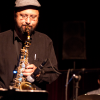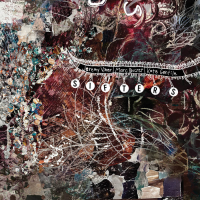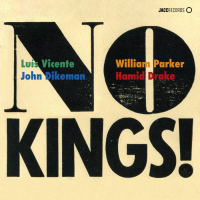Home » Jazz Articles » Album Review » Hafez Modirzadeh with Kris Davis, Tyshawn Sorey and Crai...
Hafez Modirzadeh with Kris Davis, Tyshawn Sorey and Craig Taborn: Facets
To non-pianists (and even many pianists), the question of how to tune a piano "properly" is an impossibly esoteric one. In the Western classical tradition, three major tuning techniques since the Baroque period have been used, and twentieth century "equal temperament," although often assisted by computer technology to render tuning frequencies as precise as possible, has its own limitations. Modirzadeh's approach bears on these uncertainties, but in a much more radical vein; he has substantially re-tuned selected keys within the two octaves above "middle C" on the keyboard. This means only the upper register is directly affected, although it quickly becomes clear, when listening to these pianists in this format, that all the music takes on a different character, even when just a few keys are altered. Modirzadeh thus forces the listener to confront our settled expectations of how a piano "should" sound—and in the process, he opens up musical vistas which can be both forbidding and inviting.
One sign of Modirzadeh's confidence in this work is that he only plays on eleven of the album's eighteen cuts, perfectly content to cede ground to his idiosyncratic colleagues, knowing that their musings on their reconfigured instrument will provide much of the music's intrigue. And, to be sure, these are first-rate improvisations. Listening to the pianists luxuriate in the expanded palette available to them is one of the album's pleasures. From moody to demonstrative, they bring their trademark exploratory sensibilities to their solo statements. For those only familiar with Sorey's work as a percussionist, there is no questioning his pianistic credentials alongside Davis and Taborn; his playing is consistently startling, especially on his solo improvised piece "Facet Sorey," where his juxtapositions between a delicate upper register and a thunderous lower one are striking.
When Modirzadeh does join the pianists for several duets each, the music is sublime: his closely-miked saxophone captures his rich, breathy tone perfectly, and his own ability to move outside of typical jazz harmonies enhances the power of the music. Admittedly, it does take a couple of listens to familiarize oneself with Modirzadeh's unique vocabulary. Those "wrong" notes can sound jarring, especially on first exposure, but the searching spirit animating the music does reward patient engagement, and the quality of the musicianship is undeniable.
The majority of the compositions are Modirzadeh's, with a few notable exceptions. In addition to the freely improvised tracks from Taborn and Sorey, there is a memorable reworking of Bach's Goldberg Variation No. 25, played to stunning effect by Davis, allowing each note to ring out with lambent clarity. And, last but certainly not least, there are ingenious renderings of Thelonious Monk's "Pannonica" and "Ask Me Now." Including Monk's work was an obvious choice, as he was renowned for his own experiments with "wrong" notes in trying to move his music beyond the constraints of his instrument. Listening to these masters engage his ideas is a pure delight. Modirzadeh and Taborn pair up beautifully on both "Pannonica" and "Ask Me Now," and Davis gets an opportunity to deconstruct both pieces at once on "Facet 34 Defracted."
This is an album for both head and heart, capable of being appreciated for its inspiring invention and for its musical transcendence. A stellar recording.
Track Listing
Facet Taborn; Dawn Facet; Facet 27 Light; Facet 28 Nora, Facet 29 Night; Facet 34 Defracted; Ask Me Now; Facet Sorey; Facet 31 Woke; Ebb Facet; Facet 33 Tides; Flow Facet; Pannonica; Facet BB; Facet 35 Ode B’kongofon; Facet 32 Black Pearl; Facet 39 Mato Paha; Ode Reprise.
Personnel
Album information
Title: Facets | Year Released: 2021 | Record Label: Pi Recordings
Tags
PREVIOUS / NEXT
Support All About Jazz
 All About Jazz has been a pillar of jazz since 1995, championing it as an art form and, more importantly, supporting the musicians who make it. Our enduring commitment has made "AAJ" one of the most culturally important websites of its kind, read by hundreds of thousands of fans, musicians and industry figures every month.
All About Jazz has been a pillar of jazz since 1995, championing it as an art form and, more importantly, supporting the musicians who make it. Our enduring commitment has made "AAJ" one of the most culturally important websites of its kind, read by hundreds of thousands of fans, musicians and industry figures every month.

























